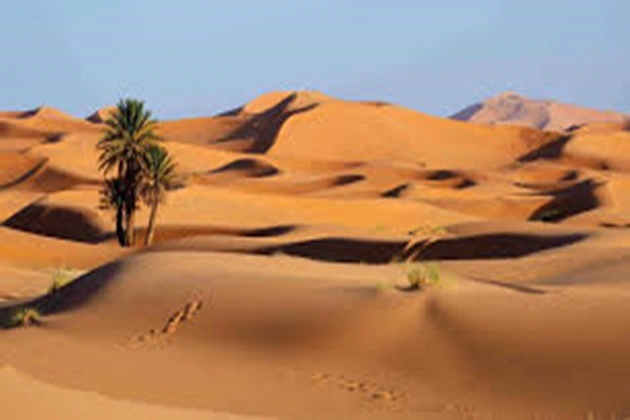Sahara Desert: In the past years, scientists have discovered changes

The picturesque green land, rich in reservoirs, was still “some” 5-10 thousand years ago, modern Sahara. In other words, there was no desert here before. Unlike modern North Africans, the ancient people in this area did not suffer from drought.
Moreover, their main food was fish. Scientists reached these sensational conclusions after discovering many unexpected artifacts on the Sahara’s territory.
Fish were caught and fried on fire
The fossils found indicate that from 10,200 to 4,650 years ago, during the early Middle and current geological period of the Holocene epoch, despite the abundance of mammals, fish made up a significant part of the wildlife here. Remains of insects, rodents, freshwater mollusks, and amphibians were also found in the desert, but in smaller numbers.
Archaeologists working in the Tadrart-Akakus mountains, in the area of the Takarkori rock shelter, excavated the bones of fish, toads, frogs, crocodiles, and birds and concluded that all these remains are mainly human food waste. Many bones show signs of cuts and burning. Gorenje.
According to scientists, “After studying the remains, we concluded that despite the presence of mammals, fish was the main food for people who lived about 10,000 years ago in this region.” In other words, ancient people actively fished and ate fish, having previously fried it on fire.
By the way, there was an abundance of clarius in this region – a fish from the catfish genus. It is distinguished by its large size, and at the same time, it lacks scales. In addition, cla rius can breathe atmospheric air and move on wet ground.
The key find is undoubtedly the remains of a fish. Although this is not uncommon in early Holocene contexts throughout North Africa, the amount of fish we have found and studied in the central Sahara is unprecedented,” said Savino Di Lernia, a researcher at the Sapienza University of Rome and the University of the Witwatersrand of South Africa.
There were rivers and lakes
The study adds fresh information about this region’s climate change and cultural adaptations. Intriguingly, fish was also common in the diet of early pastoralists.
Today, it is windy, hot, and scorched in these parts. However, the fossils found show that for much of the Early and Middle Holocene, this region —like other areas of the Central Sahara — was moist and rich in water, as well as plants and animals. By the way, many prehistoric people living here left behind several famous rock paintings.
In the most ” depressive ” part of the basin, a deposit of bluish-gray, olive and black, loamy, and clay sand, including a rich fauna of freshwater mollusks, is exposed.
This sediment is formed in an aquatic environment (from a lake to a swamp). The scientific article notes that the grayish-black sand, rich in organic matter, is located on the outskirts of the marshes corresponding to the shoreline of the former ponds.
Alas, over the next millennia, this area became increasingly dry and thus less able to support the stagnant reservoirs home to fish. The study’s results reflect this climate change.
For example, in the Wadi Tanezzuft Valley (Tassili Plateau), a large aquifer supported the Tanezzuft River, which flowed for about 200 km from south to north, ending north of the Tadrart Akakus massif.
Surface groundwater supported several ponds. A side branch of the Tanezzuft River has fed Lake Garat Ouda for millennia. The Tanezzuft River has existed for several millennia, gradually reducing its length and maintaining an extensive oasis.
In the middle of the late Holocene, the article clarifies that a decrease in the river’s flow provoked the interruption of its connection with Lake Garat Ouda, which dried up over several decades. – Several reservoirs have underground feeding in the oases of Ghat, El Barkat, and Fevet, which were active several decades ago.
Archaeological finds confirm this: According to bone analysis, about 90% of all animal remains that lived here from 10,200 to 8,000 years ago were fish, but this number has already decreased by 40% in the period from 5,900 to 4,650 years ago.
This environmental change has forced hunter-gatherers, who once relied almost exclusively on fish, to adapt and change their diet. Scientists have noted a shift over time towards eating large numbers of mammals.
According to the authors of the study, the results provide crucial information about the dramatic climate changes that led to the formation of the largest and hottest desert in the world.
The Takarkori rock shelter has once again proved that it is a real treasure for African as well as for world archaeology. This territory can be called a fundamental place for reconstructing the complex dynamics of interaction between ancient groups of people and their environment in a changing climate,” the scientists said in a statement.




